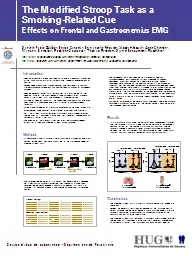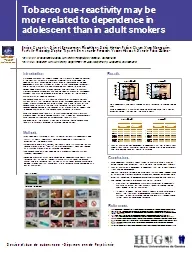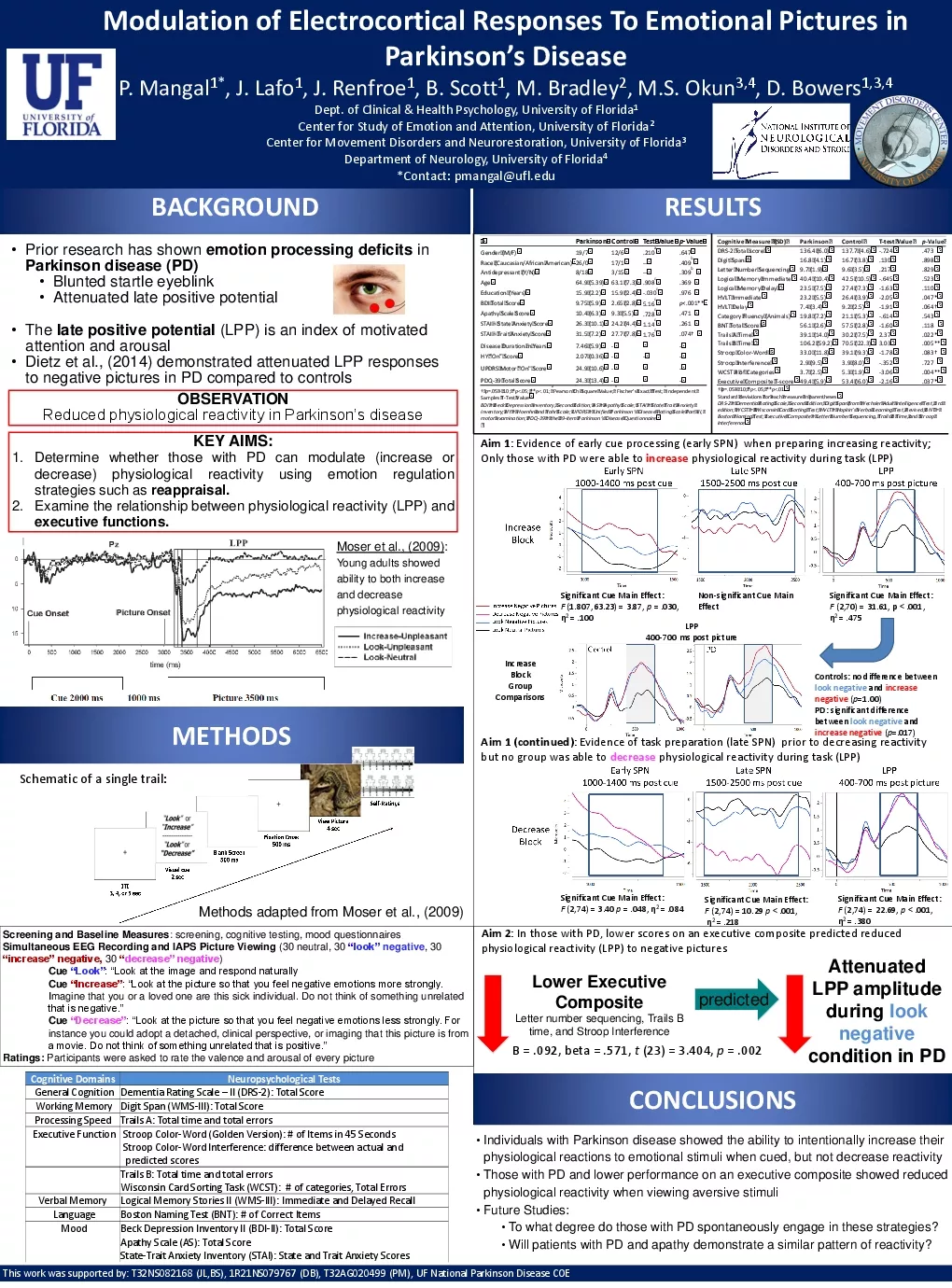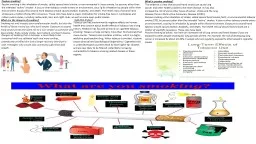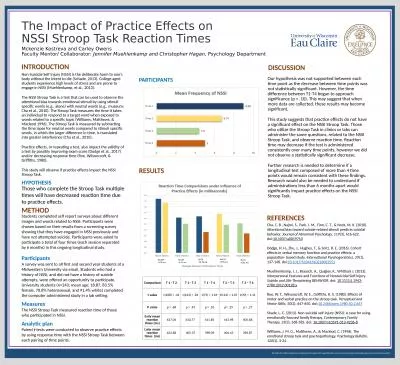PPT-The Modified Stroop Task as a Smoking-Related Cue
Author : conchita-marotz | Published Date : 2015-10-19
Effects on Frontal and Gastrocnemius EMG Service dabus de substances Département de Psychiatrie Daniele Fabio Zullino 1 Enrico Cancela 1 Emmanuelle Frésard
Presentation Embed Code
Download Presentation
Download Presentation The PPT/PDF document "The Modified Stroop Task as a Smoking-Re..." is the property of its rightful owner. Permission is granted to download and print the materials on this website for personal, non-commercial use only, and to display it on your personal computer provided you do not modify the materials and that you retain all copyright notices contained in the materials. By downloading content from our website, you accept the terms of this agreement.
The Modified Stroop Task as a Smoking-Related Cue: Transcript
Download Rules Of Document
"The Modified Stroop Task as a Smoking-Related Cue"The content belongs to its owner. You may download and print it for personal use, without modification, and keep all copyright notices. By downloading, you agree to these terms.
Related Documents

